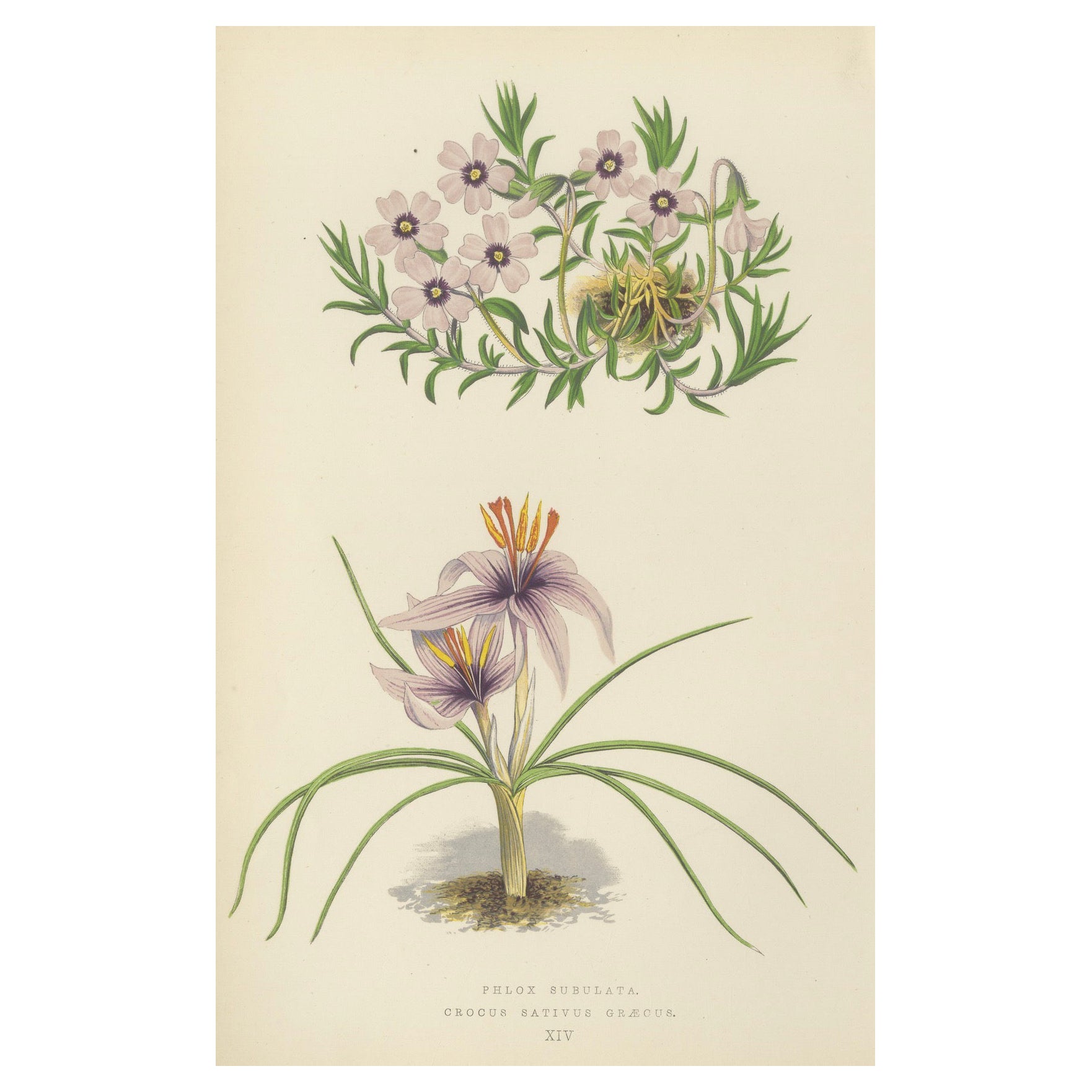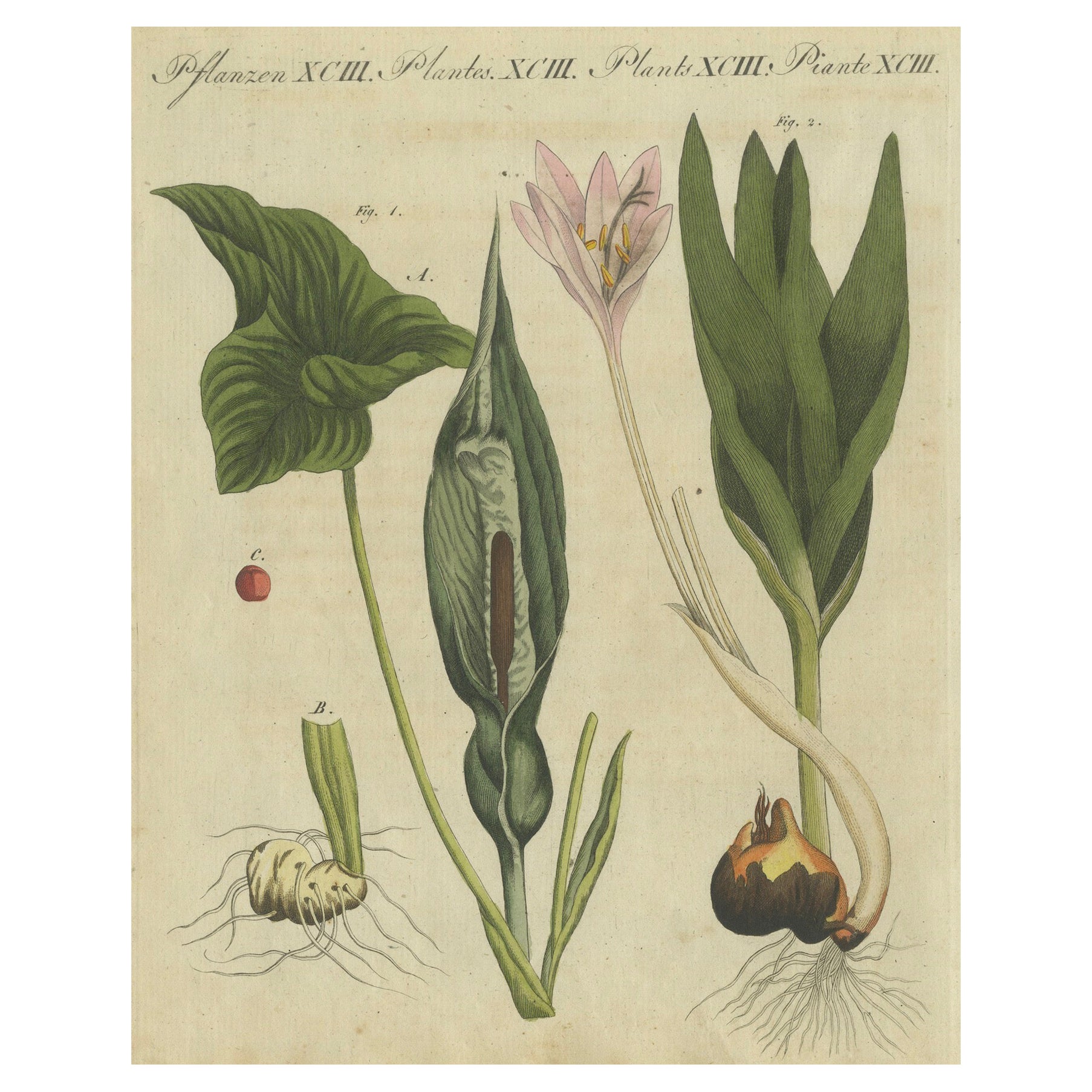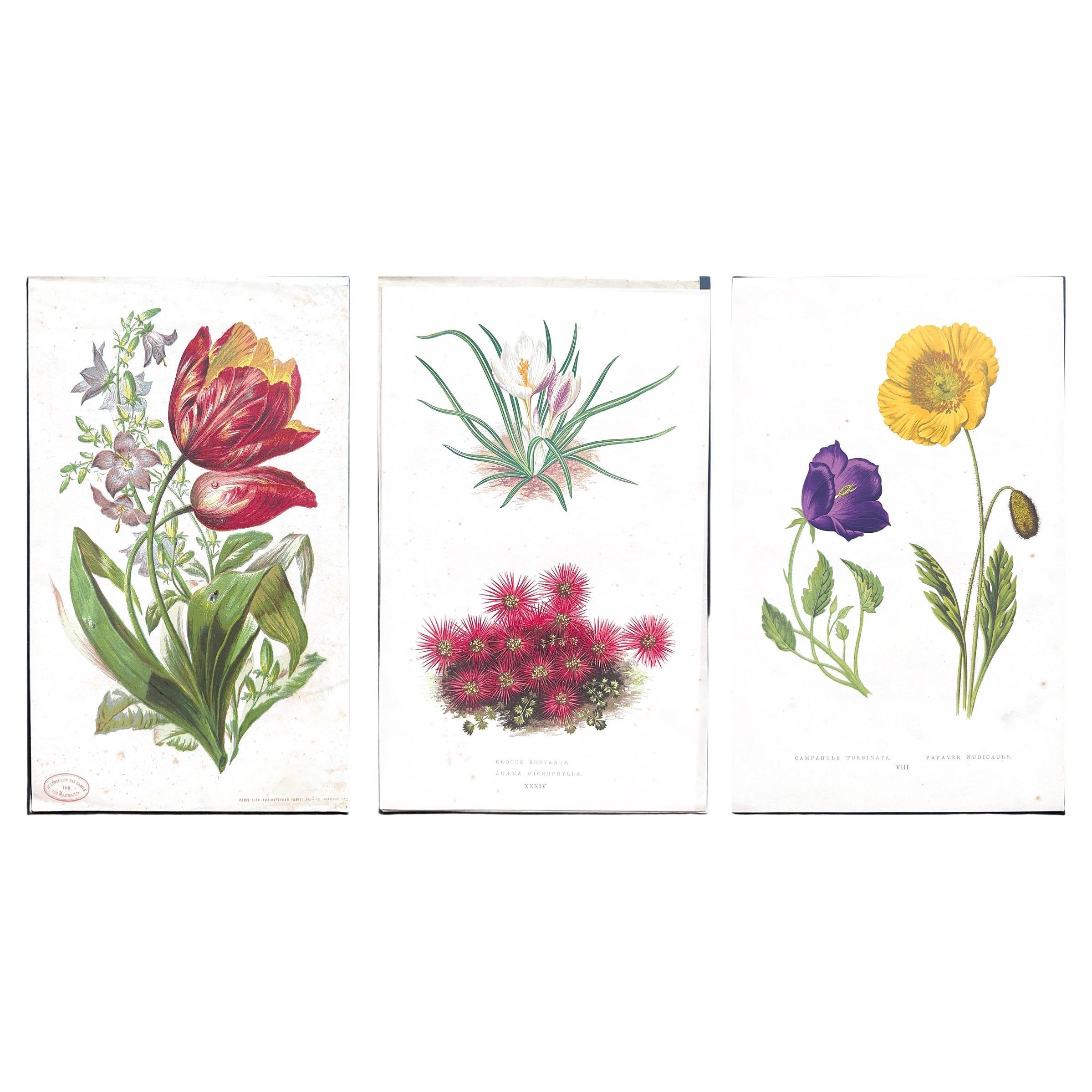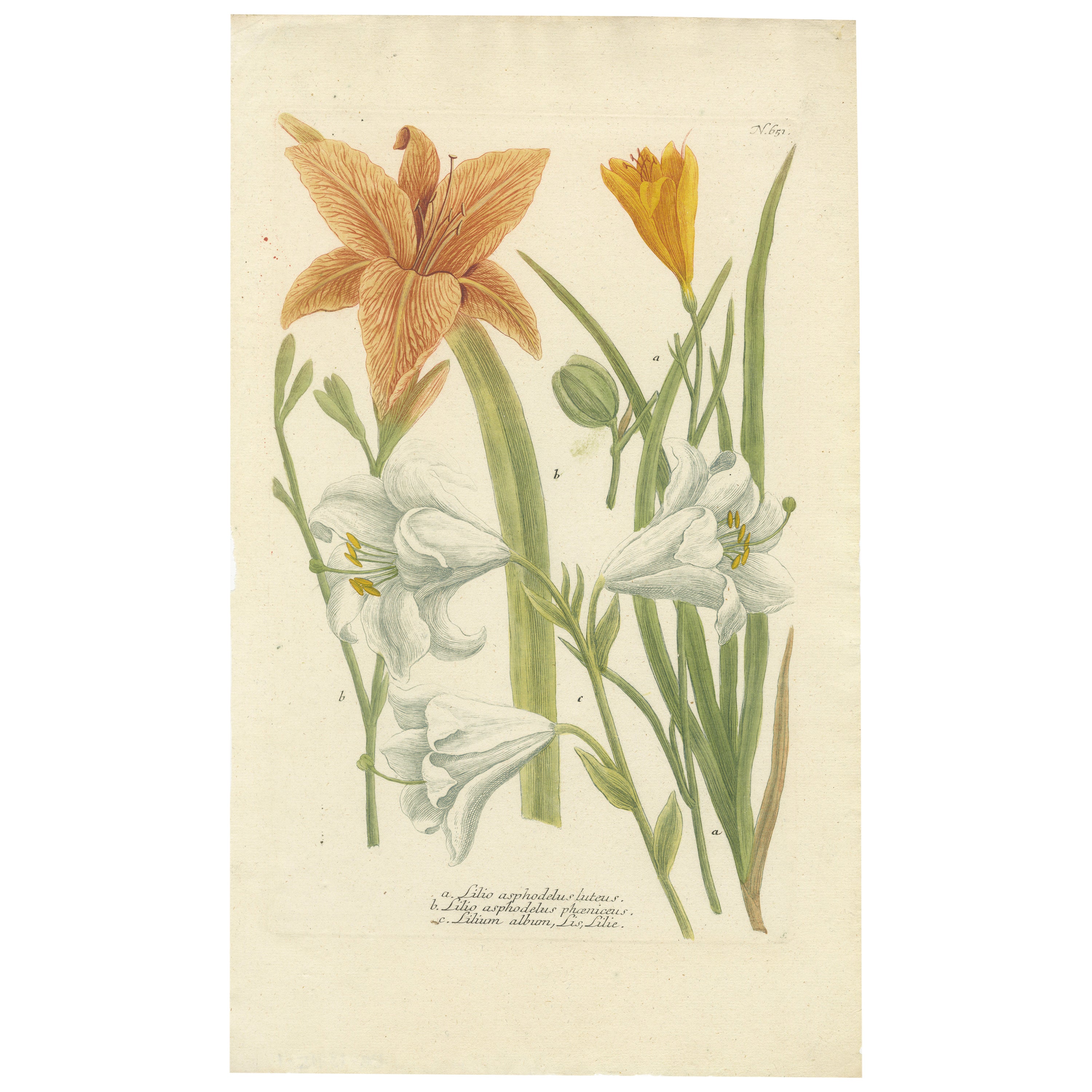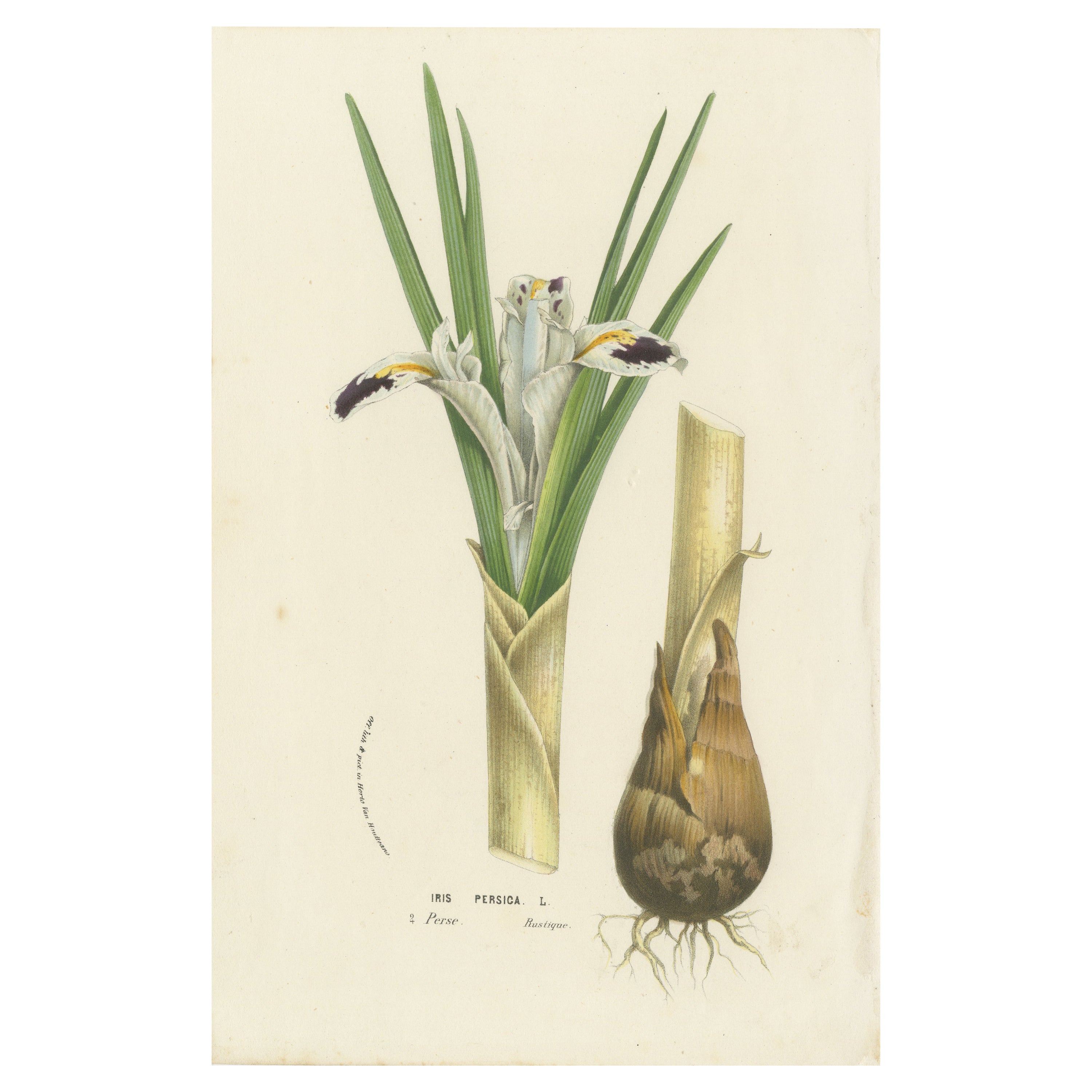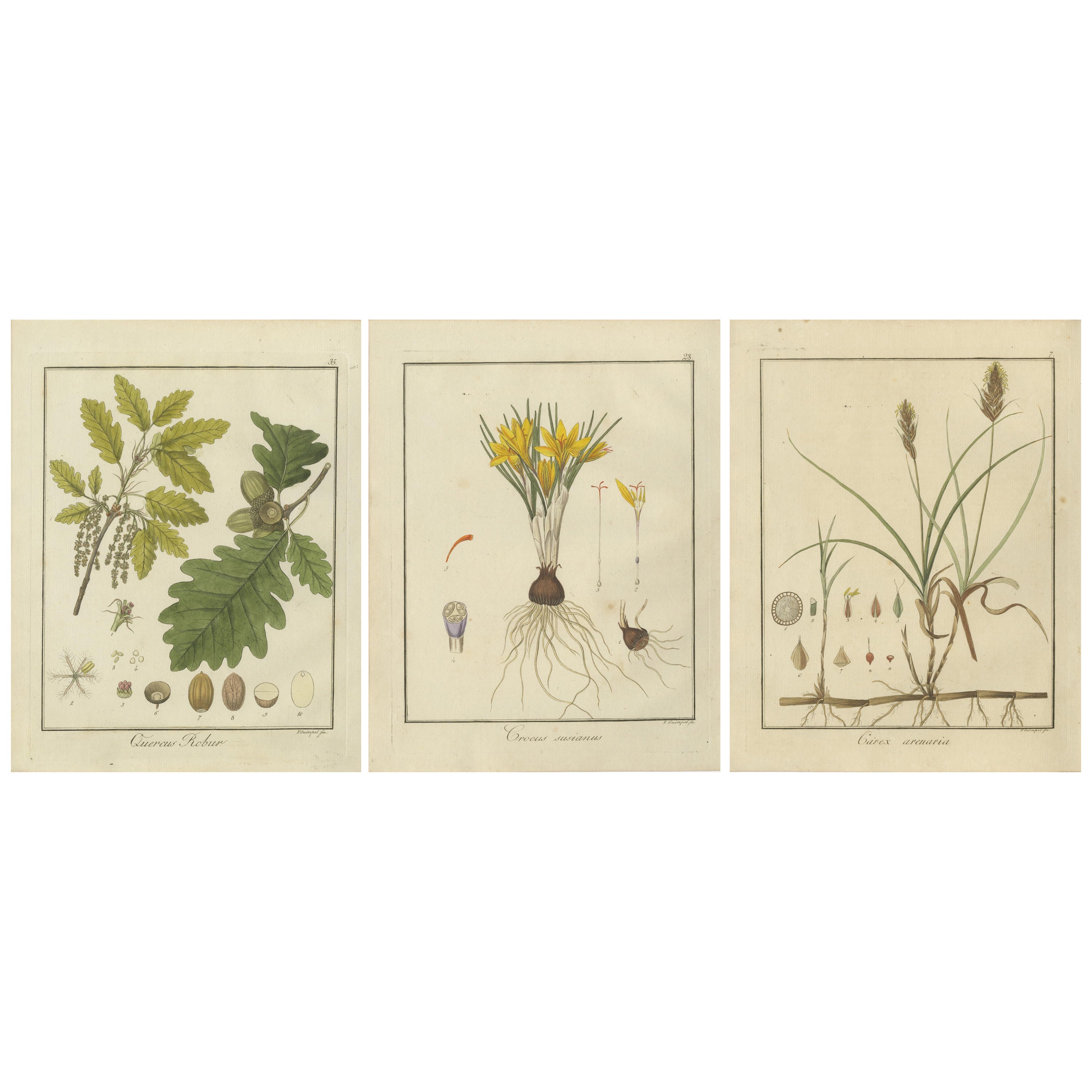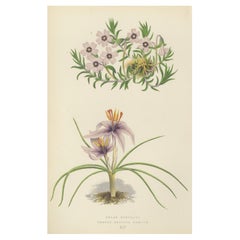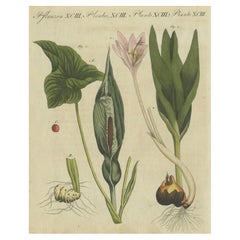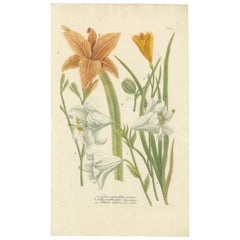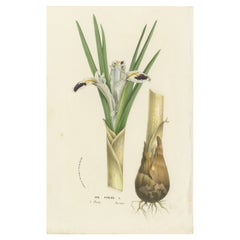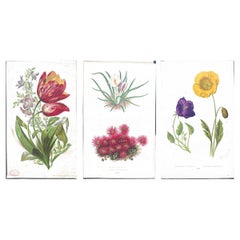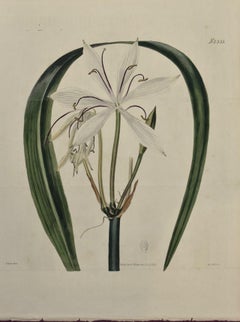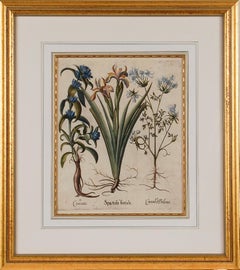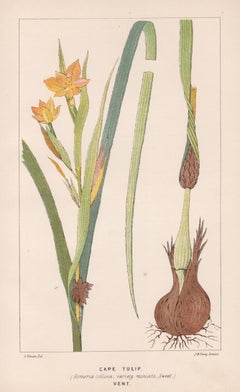Items Similar to Hand-Colored Engraving of Saffron Crocus, Crocus sativus, by F. Guimpel, 1819
Want more images or videos?
Request additional images or videos from the seller
1 of 7
Hand-Colored Engraving of Saffron Crocus, Crocus sativus, by F. Guimpel, 1819
$324.84
$406.0520% Off
£240.04
£300.0520% Off
€272
€34020% Off
CA$450
CA$562.5020% Off
A$491.86
A$614.8320% Off
CHF 259.05
CHF 323.8220% Off
MX$6,047.93
MX$7,559.9220% Off
NOK 3,237.44
NOK 4,046.8020% Off
SEK 3,045.79
SEK 3,807.2420% Off
DKK 2,071.26
DKK 2,589.0820% Off
About the Item
An original old hand-colored copperplate engraving of the plant "Oxalis stricta", commonly known as yellow wood sorrel or common yellow oxalis. This botanical illustration is detailed, showing various parts of the plant, including leaves, flowers, roots, and seeds, highlighting its structure and botanical characteristics.
- Title of Plant: *Oxalis stricta* (Common English names: Yellow Wood Sorrel, Common Yellow Oxalis)
- Engraver: F. Guimpel, whose name appears in the lower right corner of the engraving.
- Author/Botanist: Dr. Friedrich Gottlob Hayne, a noted German botanist and professor of pharmaceutical botany at Berlin University.
- Publication: This engraving is part of the 6th edition of "Getreue Darstellung und Beschreibung der in der Arzenykunde gebrauchlichen Gewächse", which translates to "Faithful Representation and Description of Plants Used in Medicine."
- Edition and Year: 6th Edition, published in 1819.
Habitat and Uses of Oxalis stricta:
The image is a hand-colored copperplate engraving of "Crocus sativus," commonly known as the saffron crocus. This detailed illustration shows the flowering plant with its distinctive violet petals and the long, orange-red stigmas, which are harvested to produce saffron. The engraving also includes botanical details, such as the bulb, roots, and other anatomical features of the plant.
Details of the Work:
- Title of Plant: *Crocus sativus* (Common English name: Saffron Crocus)
- Engraver: F. Guimpel, whose name appears in the lower right corner of the engraving.
- Author/Botanist: Dr. Friedrich Gottlob Hayne, a renowned German botanist, professor of pharmaceutical botany, and author of botanical works.
- Publication: This engraving is part of the 6th edition of "Getreue Darstellung und Beschreibung der in der Arzenykunde gebrauchlichen Gewächse", which translates to **"Faithful Representation and Description of Plants Used in Medicine."
- Edition and Years: 6th Edition, published in 1819.
Habitat and Uses of Crocus sativus:
Habitat:
- Geographical Distribution: Crocus sativus is believed to have originated in Greece or Southwest Asia. It is now cultivated in various regions around the world, including Iran, India (particularly in Kashmir), Spain, and Italy.
- Growth Environment: Saffron crocus grows best in well-drained soils with a lot of sunlight. It is typically cultivated in arid and semi-arid regions, thriving in Mediterranean climates with hot, dry summers and mild, wet winters.
Uses:
- Culinary Uses: Saffron, the spice derived from the dried stigmas of Crocus sativus, is highly valued for its unique flavor, color, and aroma. It is used in a variety of cuisines, including Indian, Persian, Spanish, and Italian, to flavor and color dishes like paella, biryani, and risotto.
- Medicinal Uses: Historically, saffron has been used in traditional medicine for its potential health benefits. It has been used as an antispasmodic, antidepressant, and sedative. Modern research explores its potential effects on mood disorders, inflammation, and as an antioxidant.
- Cultural and Economic Importance: Saffron is one of the most expensive spices in the world due to the labor-intensive harvesting process. Each flower produces only a few stigmas, requiring thousands of flowers to produce a small amount of saffron.
This engraving demonstrates the high level of botanical detail and artistry characteristic of the works produced under Dr. Friedrich Gottlob Hayne's guidance, highlighting the importance of Crocus sativus in both historical and modern contexts.
- Dimensions:Height: 10.83 in (27.5 cm)Width: 8.55 in (21.7 cm)Depth: 0 in (0.02 mm)
- Materials and Techniques:Paper,Engraved
- Period:
- Date of Manufacture:1819
- Condition:Condition: excellent given age. General age-related toning and/or occasional minor defects from handling. Original hand-colored etching / engraving on hand laid (verge) paper with matermark. The Please study scans carefully.
- Seller Location:Langweer, NL
- Reference Number:Seller: BG-13747-121stDibs: LU3054341258572
About the Seller
5.0
Recognized Seller
These prestigious sellers are industry leaders and represent the highest echelon for item quality and design.
Platinum Seller
Premium sellers with a 4.7+ rating and 24-hour response times
Established in 2009
1stDibs seller since 2017
2,620 sales on 1stDibs
Typical response time: <1 hour
- ShippingRetrieving quote...Shipping from: Langweer, Netherlands
- Return Policy
Authenticity Guarantee
In the unlikely event there’s an issue with an item’s authenticity, contact us within 1 year for a full refund. DetailsMoney-Back Guarantee
If your item is not as described, is damaged in transit, or does not arrive, contact us within 7 days for a full refund. Details24-Hour Cancellation
You have a 24-hour grace period in which to reconsider your purchase, with no questions asked.Vetted Professional Sellers
Our world-class sellers must adhere to strict standards for service and quality, maintaining the integrity of our listings.Price-Match Guarantee
If you find that a seller listed the same item for a lower price elsewhere, we’ll match it.Trusted Global Delivery
Our best-in-class carrier network provides specialized shipping options worldwide, including custom delivery.More From This Seller
View AllMoss Phlox and Greek Saffron Crocus hand coloured botanical print 1874
Located in Langweer, NL
Moss Phlox and Greek Saffron Crocus hand coloured botanical print 1874
This elegant hand coloured botanical print from 1874 features two delicate and colourful alpine plants, Phlox ...
Category
Antique 1870s Prints
Materials
Paper
Elegant 1805 Hand-Colored Botanical Engraving of Bulbous Plants from Bertuch
Located in Langweer, NL
Title: Elegant 1805 Hand-Colored Botanical Engraving of Bulbous Plants from Bertuch
Description:
This detailed hand-colored botanical engraving is taken from Friedrich Justin Be...
Category
Antique Early 1800s Prints
Materials
Paper
Hand-colored Mezzotint Engraving of a Lily from Johann Weinmann's Work, 1748
Located in Langweer, NL
Artist or Maker: Johann Wilhelm Weinmann
Title: "Lilio asphodelus luteus. Lilio asphodelus phoeniceus. Lilium album"
Medium: Colored etching
Source: "Duidelyke vertoning eeniger duiz...
Category
Antique 1740s Prints
Materials
Paper
$754 Sale Price
20% Off
Free Shipping
Botanical Illustration of Persian Iris: Iris persica from Iran, c.1855
Located in Langweer, NL
Botanical Illustration of Persian Iris: Iris persica from Iran
This lithograph depicts the Iris persica, commonly known as the Persian Iris. Native to Iran (Persia), this species of...
Category
Antique 1850s Prints
Materials
Paper
$133 Sale Price
20% Off
English Oak, Cloth of Gold Crocus, and Sand Sedge: Botanical Illustrations 1819
Located in Langweer, NL
Hand-Colored Engravings that were published in the 1819 sixth edition of "Getreue Darstellung und Beschreibung der in der Arzenykunde gebrauchlichen Gewächse" by Friedrich Gottlob Ha...
Category
Antique 1810s Prints
Materials
Paper
$563 Sale Price / set
20% Off
Vintage Verdure: Original Hand-Colored Engravings of 1845 Flora
Located in Langweer, NL
These hand-colored engravings are delicate illustrations of select flora from the 'Dictionnaire Classique des Sciences Naturelles' by Pierre Auguste Joseph Drapiez, published in Brus...
Category
Antique Mid-19th Century Prints
Materials
Paper
$353 Sale Price / set
20% Off
Free Shipping
You May Also Like
Alpine Avens and Crocus – Original Hand-Colored Botanical Print, 1880s
Located in Fukuoka, JP
Alpine Avens and Crocus – Original Hand-Colored Botanical Print, 1880s
A charming original 19th-century botanical print featuring Alpine Avens (Acaena microphylla) and Crocus boryan...
Category
Antique 19th Century British Prints
Materials
Paper
Flowering Crinum Plant: A 19th C. Hand-colored Botanical Engraving by Curtis
By William Curtis
Located in Alamo, CA
This early 19th century hand-colored double fold-out botanical engraving is entitled "Crinum Arenarium" (Water-Island Sand Crinum), plate 2355, published in London in 1822 in William...
Category
1820s Naturalistic Still-life Prints
Materials
Engraving
Flowering Iris & Other Botanicals: Framed 17th C. Besler Hand-colored Engraving
Located in Alamo, CA
This is a hand-colored copper-plate engraving entitled "I. Spatula foetida - II. Caucalis Dodonei - III. Cruciata", depicting three flowering plants, including an Iris, from Basilius Besler's landmark work, Hortus Eystettensis (Garden at Eichstatt), first published in 1613 in Eichstatt, Germany near Nuremberg and later in 1640 and 1713.
This beautiful hand-colored botanical engraving is presented in a gold-colored wood frame with a French mat...
Category
Mid-17th Century Academic Still-life Prints
Materials
Engraving
Cape Tulip (Homeria collina), antique botanical lithograph
Located in Melbourne, Victoria
'Cape Tulip (Homeria collina, variety miniata, Sweet)'
Colour lithograph, 1909.
Category
Early 20th Century Naturalistic More Prints
Materials
Lithograph
Flowering Narcissus Lily: 18th Century Hand-colored Weinmann Botanical Engraving
By Johann Wilhelm Weinmann
Located in Alamo, CA
This is an original antique colored botanical mezzotint and line engraving of a flowering Red Narcissus Lily plant, which is finished with hand-coloring. It is entitled "Narcissus In...
Category
Mid-18th Century Naturalistic Still-life Prints
Materials
Engraving, Mezzotint
19th C. Hand Colored Botanical "Alpinia Nutans Rosc." Lithograph
Located in San Francisco, CA
19th C. hand colored Botanical "Alpinia Nutans Rosc." Lithograph
Fine antique hand colored lithograph
The color is still strong after all these years
The lithograph comes un...
Category
Antique Late 19th Century English Prints
Materials
Paper
More Ways To Browse
Thousand Flowers
Sheffield Flask
Shelves On Wheels
Sheraton Secretary
Silver Plated Champagne Flutes
Silver Plated Statue
Silver Punch Cups
Slate Garden Table
Small Bronze Buddha
Small Burl Cabinet
Small Satsuma Vase
Small Wood Dressers
Spanish Armour
Spanish Style Chest
Spindle Headboard
Spring Chair Outdoor
St Bernard Dog
Staffordshire Cottages
